The Lone Star State evokes many images, and our minds are often drawn to instant stereotypes about the second-largest state in the US.
For many, Texas is synonymous with cowboys, guns, big oil, vast open landscapes, and ranches hosting a barbeque, y’all.
Yet, Texas can be a contradiction. Instead of cattle grazing on native vegetation, picture wild game like Thomson’s Gazelle or an Axis with regal antlers looking nervous as it lingers on the edges of the interstate and trespasses on private property.
This massive state is home to several exotic species in the big game family. Animals like the Nilgai antelope, Aoudad sheep, Axis deer, Sika deer, Fallow deer, Thomson’s gazelle, Blackbuck antelope, feral hogs, and more species are part of the Texas exotics. Not to mention several feathered species.
Animals thrive in Texas because of weather conditions, vegetation, forests, and fewer humans.
Texas Exotic Animals
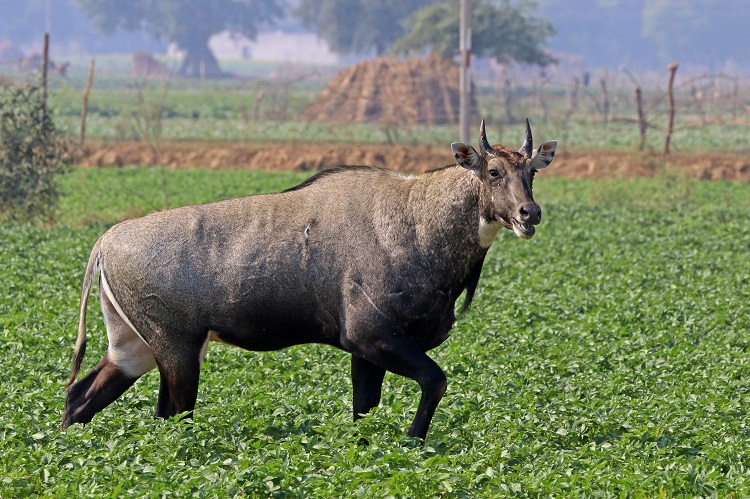
The animals on this list are not indigenous to the Lone Star State. The first exotics didn’t land on Texan soil until about a century ago when the famous King Ranch imported its first exotic animals, the Nilgai antelope.
Of course, the Spaniards who arrived in the 16th Century brought the first swine, the feral hogs.
In a Texan survey conducted in the late 1980s, the results revealed 67 exotic species. Some of these exotics are part of farms, and other animals escaped.
Thomson’s Gazelle
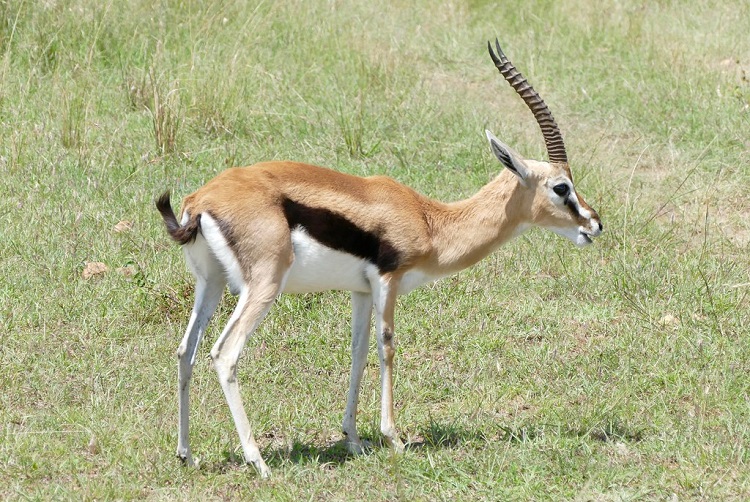
Thomson’s gazelle is perhaps the most iconic animal kept on Texas ranches. This graceful and nimble animal is known as a Tommie. This is a common gazelle and the fourth fastest land animal, reaching 50 to 55 miles per hour.
These nimble herbivores are kept for Texas exotic hunts on ranches and sold for trophy fees to hunters. Similar to Grant’s gazelle and springboks, Thomson’s gazelle have a white rump.
Slender and dainty in appearance, these formidable gazelles have tall, elegantly-rimmed horns that are more prominent in males.
Their coat is sandy-red, decorated with black and white bands to blend into the arid grasslands and savannahs.
Tommies have a comical bounce when on the move. They’re hardy and can adapt their bodies and organs to their environment. These ungulates can also adapt to and live in dense woodlands.
Aoudad Sheep
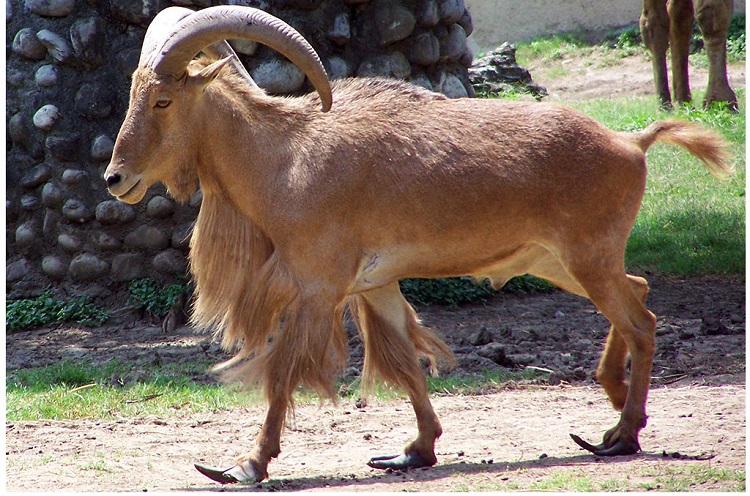
Aoudads have become a problem in America through no fault of their own. Private ranchers and animal institutions started to import Aoudad sheep at the turn of the 20th century.
Also known as Barbary sheep, this breed started to populate the Texan wilderness by the 1950s, with the government granting a hunting license program to kill as a means of control.
Aoudad adapted to their newfound territory and multiplied. Easily identified by their light, caramel coat and large round horns, these indigenous Northern African sheep look similar to native desert big-horn sheep and compete for food in the Southwest region.
More aggressive, Aoudads are also larger, can adapt to dry weather conditions better than indigenous bighorn sheep and Mule deer, and are considered invasive species.
Axis Deer
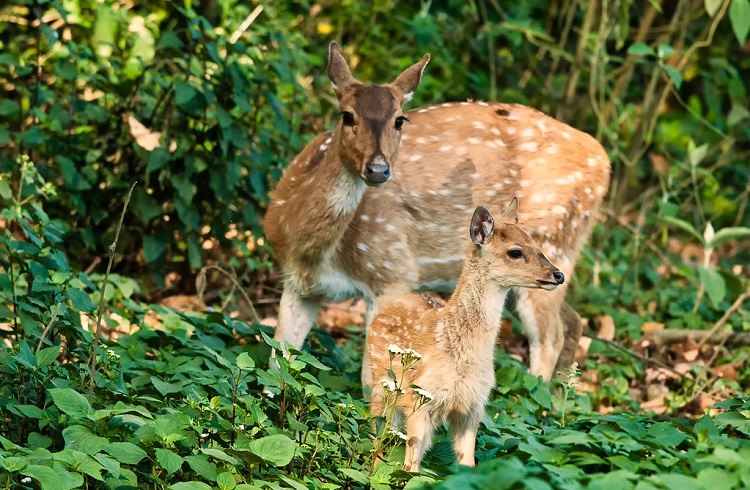
Axis deer are causing problems for native deer species and have also been declared invasive. They didn’t come of their own accord and stemmed from India, Nepal, and Sri Lanka.
This beautiful animal is distinguishable with its unique orange coat decorated with white polka dots. Males sport a sweeping rack.
Introduced to the state in the 1930s, Axis deer thrive in herds across the Edwards Plateau region, reminding them of home. They tolerate heat well, are active at dusk and dawn, and forage in open grasslands near woodlands for protective cover.
Non-native deer compete against white-tail deer in Texas parks for habitat and food around Edwards Plateau in the north of central Texas. Hunting Axis deer and other deer species with a valid hunting license is legal and encouraged.
Blackbuck Antelope
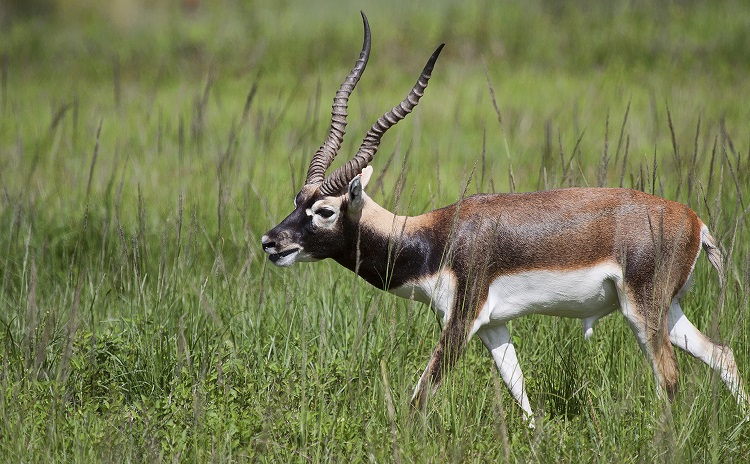
Perhaps many of these hoofed antelope prove why no person should be allowed to import wild animals. Houston, we now have a problem with Blackbuck antelope all across the Texan plains. Blackbuck antelopes are endemic to India and Pakistan and recognizable for their corkscrew horns.
Females don’t have horns and have tan fur with a white underbelly. Bucks are medium-sized, with black coats and white undercarriages. They’ve been thriving on Edward’s Plateau since they arrived in 1932. The plateau has scattered trees and is a mixed woodland-grassland eco-habitat.
Approximately 20,000 Blackbucks compete with this region’s cattle, sheep, and goats. Blackbucks are valued for trophy hunting and kept on sport hunting farms in the south Texan range.
Mouflon Sheep
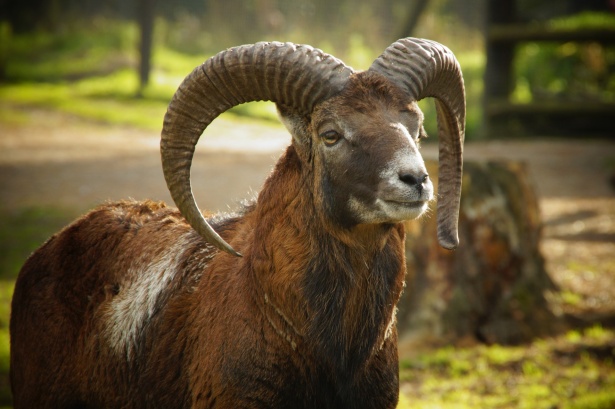
Mouflon sheep definitely have a rack worth talking about. These majestic wild sheep are indigenous to Cyprus, the Caspian side of Turkey, and all the way to Iran. Mouflons are unique and possibly the origin of modern domestic sheep species.
Mouflons have short coats with reddish-brown fur, dark striping, and a lighter, white saddle patch. Only some females are horned. Mature buck horns might curve to one full revolution.
The Mouflon sheep is protected in its native countries. In Texas, Mouflons are an expensive ticket in a trophy hunt for their beautiful horns.
Mouflon sheep are shedding sheep and arrived in the United States in the early 1900s. By the mid-1900s, some zoos sold their stock to private reserves for hunting.
Nilgai
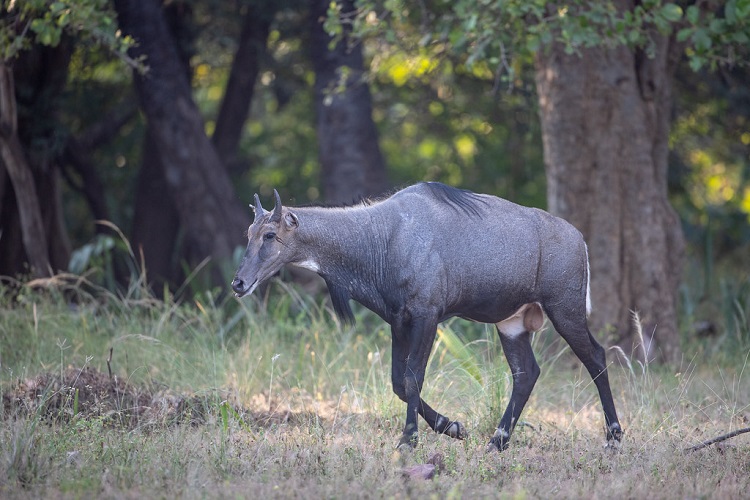
Diurnal, Nilgai is mostly active during the day and is the largest antelope in Asia. Nilgai means blue cow; these unique antelope have a sloping back and dense fur. Bucks have blueish-gray fur. Juveniles and females are tawny or orange-toned.
Their body is disproportionately large for their head and rests on deep shoulders and a strong neck with a white throat. In this wild game family, only males have horns.
Nilgai stems from Northern India, and herds of up to 30,000 traverse the Texan coastal prairies along south Texas. Feral Nilgai has adapted to the grasslands, scrub, and agricultural land, often busting through fencing and opening wildlife corridors for hoofed species and other animals.
Feral Hogs
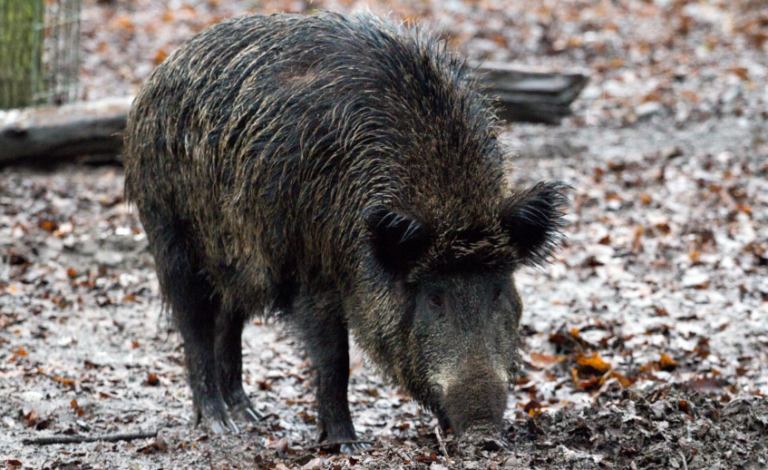
A feral hog and a feral pig are the same animal, sometimes called razorbacks or wild hogs, and include boars or pig hybrids.
Early explorers came to Florida in 1539 and left their pigs behind. These highly intelligent animals then said hasta luego to their Spanish owners and prospered in Texas.
Droves of feral hogs soon began getting it on with the Eurasian wild boars that also arrived with early settlers and are today’s hybrids, feral hogs, or wild boars.
The Texan landscape has a staggering hog community of over 4 million piggies. Roaming feral hogs can be destructive and damage forests and the habitat of endangered ground-nesting breeding birds.
Emu
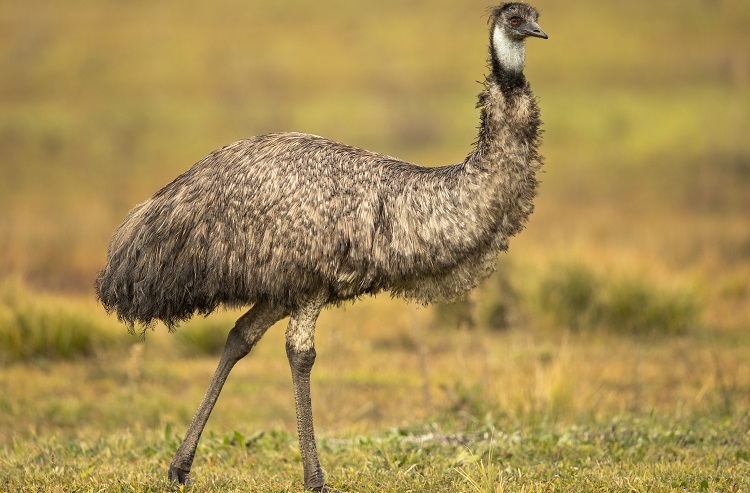
Native to Australia, Emu are flightless birds from the Ratite family, including kiwis, cassowaries, rheas, and ostriches. These long-necked birds can reach up to six feet and run up to 40 miles per hour. They’re now part of the Texan exotic wildlife that can be problematic.
Emu and Ostrich farming became a short-lived trend during the 1980s for people looking for healthier meat alternatives.
The trend never took off, and farms collapsed, freeing their stock. Emus meander around open areas near woodlands. They can startle unsuspecting people when they approach roads and cause traffic jams.
Emus, like the ostrich, are omnivores and forage plants, small rodents, and insects like large beetles, centipedes, and small reptiles. Emu females are larger than males and are usually docile. They lay beautiful green speckled eggs.
Sika Deer
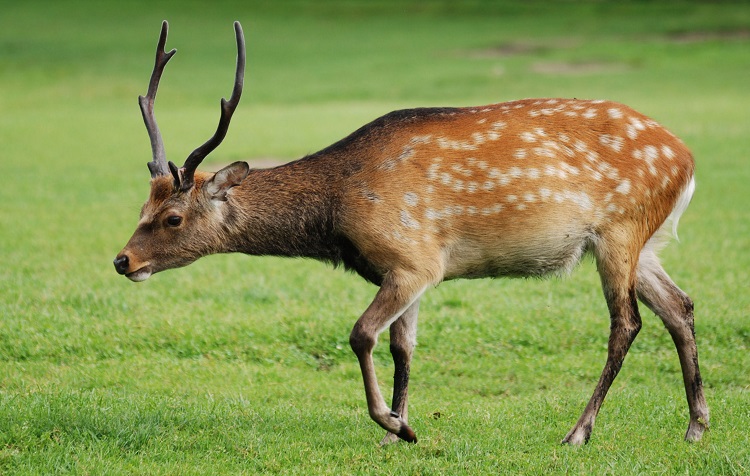
Sika or Northern Spotted Deer have a spotted coat similar to that of a fawn. At first glance, the Sika deer species resemble Axis species but have a white bum that turns grey in the winter. Sika are indigenous to Japan and flourish in forested pine areas and warmth.
According to Texas government surveys, they numbered about 5500 in 1994 and were found in 77 Texan counties. The IUCN categorizes Sika as of the least concern.
There is no data to confirm the Sika deer’s detrimental effect on flora and fauna. However, ranchers claim they destroy crops and therefore encourage hunting.
Collared Peccary
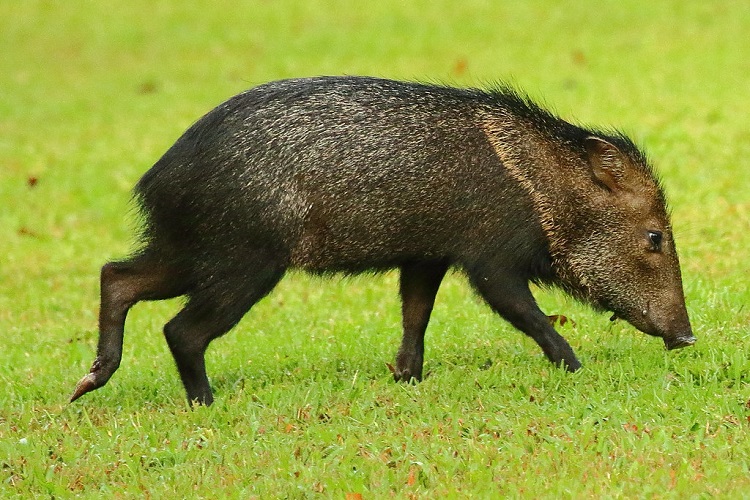
Javelina or collard peccaries make their home in Texas on arid or semi-arid terrain. Javelinas resemble feral hogs but are much smaller species and not related. Feral hogs belong to the genus Sus, and javelina belongs to Pecari.
Javelinas are indigenous mammals and are frequently found in the South Texas brush country of the Trans-Pecos desert, where they consume prickly pear cacti.
There are occasional encounters when javelinas nest under homes or sheds in more urban areas. However, javelinas don’t deserve a reputation as ferocious beasts. They’re hunted game and are often mistaken for feral hogs.
Texas Exotic Pets
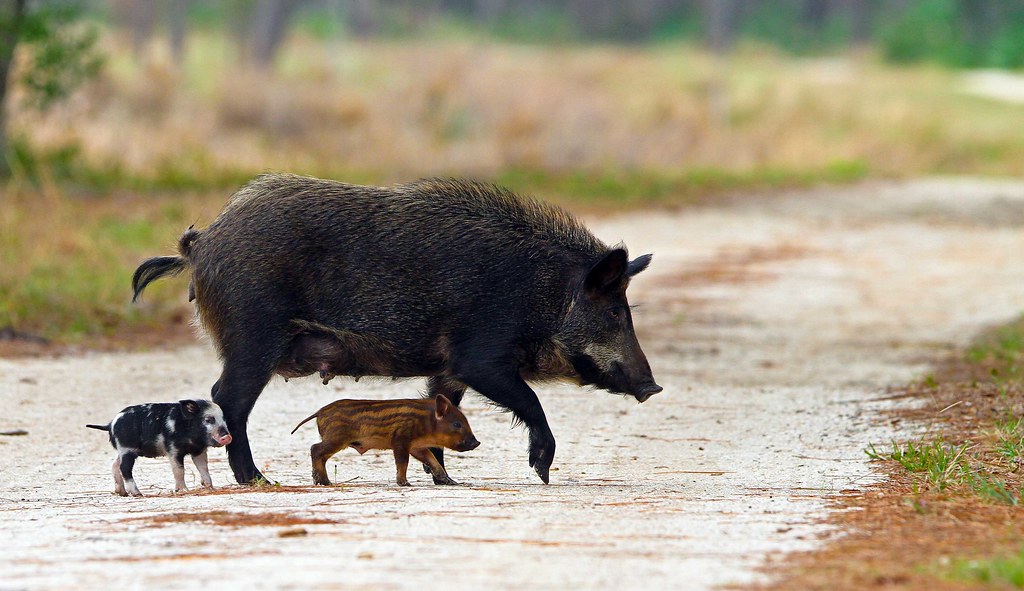
Pets of various exotic species here in the USA and Texas are governed by each state individually. Owners of dangerous wild pets in Texas must obtain a Certificate of Registration (CPR). Before purchasing or importing any wild animal, investigate the current Texas pet laws.
Unless an animal is officially banned, like wolves, bats, Diamondback terrapins, indigenous birds, or endangered species, people can keep them without a permit in Texas. However, no person shall keep more than six (25 of various species, non-game).
Only captive-bred coatimundis are allowable as pets. Proof of purchase is necessary. Exotic pet animals west of the Pecos River in counties with less than 24,000 people don’t need permits.
Animals That Fall Under the CPR Include the Following:

- Felines like lions, tigers, ocelots, cougars, leopards, cheetahs, jaguars, bobcats, and lynx
- Bears
- Coyotes, jackals
- Baboons, chimpanzees, orangutans, and gorillas
- Hybrids
Texans Need a Residential Controlled Snake Permit for the Following Venomous Pet Snakes:
- African rock and Asiatic rock pythons
- Green anacondas
- Reticulated and Southern African pythons
Keeping a pet alligator requires a special permit from the Department of Parks and Wildlife.
Texas Hunting Animals
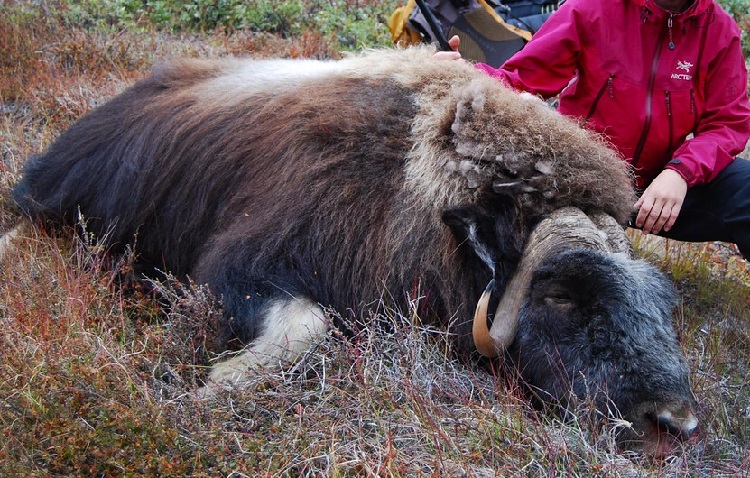
Trophy hunting is a big sport in America and Africa and attracts many trophy sportsmen with a penchant for shooting something.
This proudly independent state has a long sport-hunting history. Access to live game stock in private reserves or Texas parks makes it an attractive destination for hunting tourists and locals.
Texas has a healthy population of exotic ungulates from Asia, Europe, and Africa.
Since many of these exotic animals were carelessly introduced to the wild, they have become top hunting opportunities and targets founded on the argument that these non-natives are invasive and bad for native wildlife.
This free game animal access makes hunting a lucrative and popular adventure.
Many hunting outfitters make game of various species available for shootings to their clients. The list of available exotics is long and includes free-range elk or fenced stock to hunt.
Available With a Hunting License and Registered Guns:
- Blackbuck, Addax, Lechwe, Oryx (scimitar-horned) Beisa Oryx, Gnu, Impala, Kudu, Nyala, Springbok, Nilgai, Eland antelope species
- Axis deer, Fallow deer, and Sika deer (Fallow have palmate antlers)
- Mouflon sheep, Corsican sheep, free-range Aoudad sheep
- Miscellaneous like zebra, elk, feral hogs
Exotic Hunting
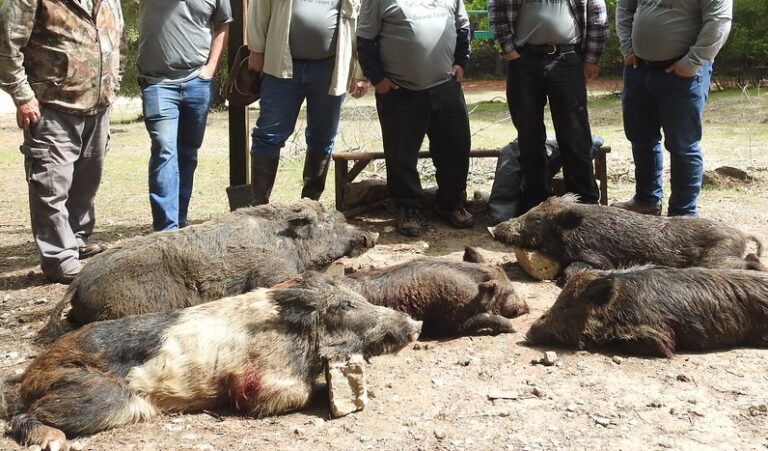
Any animal that falls under the various exotic game umbrella in Texas can be hunted year-round. Hunt outfitters might have different availability or prices depending on the animal on the exotic game or trophy list and also the season. Hunters pay daily trophy fees depending on whatever animal they kill.
Daily fees range from $200 to $300, including accommodation, meals, and a guide. On a hunt, wounded targets count as a kill with a trophy fee.
Sporting outfitters can typically arrange for a hunting license for locals or foreign visitors as long as clients provide license and age profiles in advance for hunting exotics. There are some age exceptions.
Outfitters make hunting weapon recommendations for their clients to take the life of any particular wild species with. To shoot a free-range Axis deer, hunters pay approximately $3500 for a two-and-a-half-day adventure near Sonora, TX, including meals, lodging, a guide, and one dead Axis buck.
Hunting experiences, depending on the exotic animal hunted, range anywhere from $1700 (for a wild turkey) to $14,000 for a free-range elk. An Axis deer package can cost around $3400. Gratuities for the guide and cook are extra.
Texas Game Animals
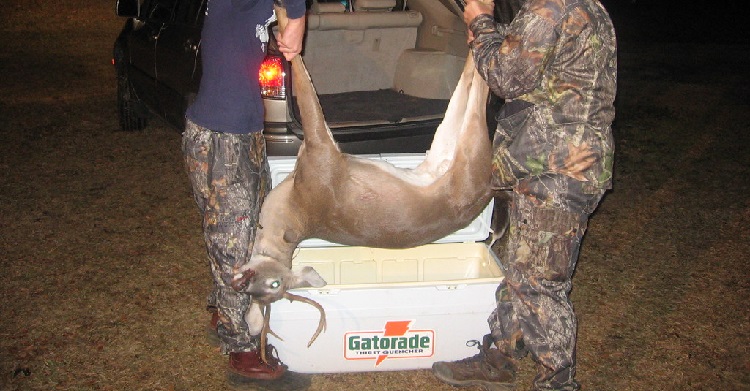
The state has a unique range of habitats and private reserves that stock wild game. The most significant game stock in the state is the below-mentioned species; however, specialty outfits have access to rare trophy stock.
Hunters are not averse to hunting opportunities for native animals and imported wildlife and need a hunting license.
- Exotic game like Axis deer and Sika deer, feral hogs, Blackbuck antelope, etc.,
- Whitetail deer
- Fallow deer
- Mule deer
- Desert Bighorn Sheep
- Pronghorn Antelope
- Squirrels (gray, cat, red, or fox)
- Collard Peccary
- Various species of Texas exotics
- Elk
- Nilgai, gemsbok, and native animals
Many sportsmen participate in state-sponsored hunts like Big Time Texas Hunts.
White-Tailed Deer
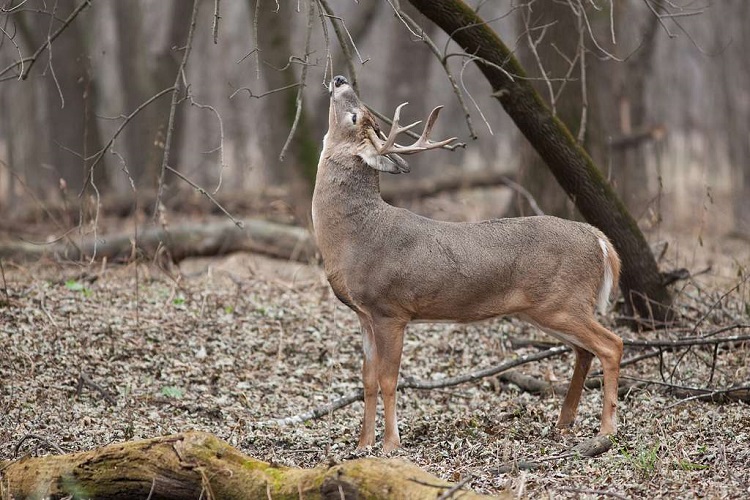
Apparently, Texans have an emotional attachment to white-tail deer. Sportsmen harvest this prolific animal throughout the state, where population estimates are close to half a million. There are some antler restrictions in certain counties.
Mule Deer
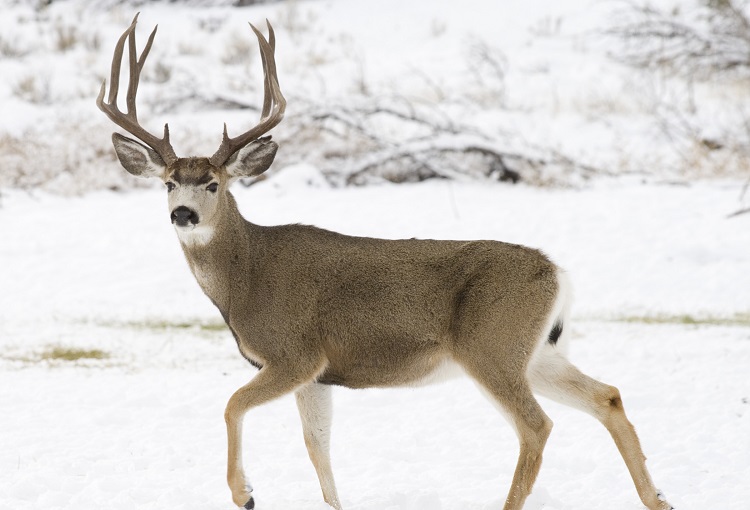
The mule habitat is mostly west of the Pecos River and the High Plains of the Texas Panhandle.
Mule populations fluctuate and have experienced a significant decrease in western Texas due to drought, habitat loss, and competition from Axis deer. Mule deer are larger than white-tail and have different shooting seasons.
Mules suffer from Chronic Wasting Disease (CWD) and aren’t always for meat hunts.
American Pronghorn

Unique to North America, pronghorns once had approximately two populations of 30 to 40 million animals in their herds. Today, pronghorns roam only the Trans-Pecos, Panhandle, and Rolling Plains, south Texas eco-regions.
Numbers are in decline due to lack of rain, and net fencing is one of the key issues facing pronghorns.
Desert Bighorn Sheep
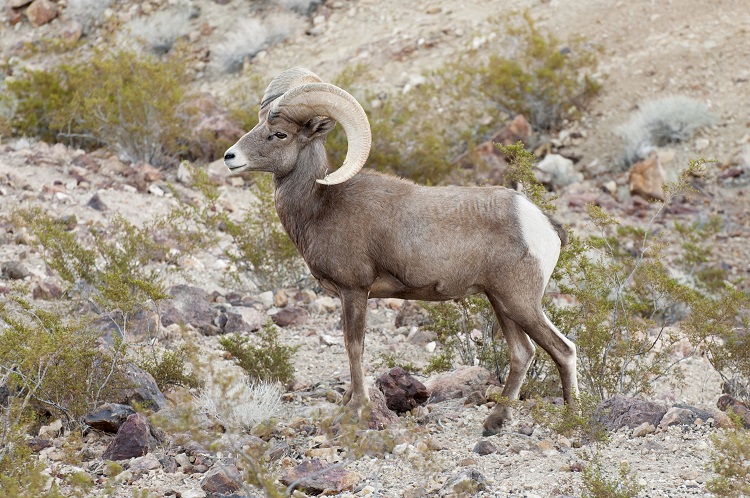
Once prolific in the mountainous terrain of the Trans-Pecos, Desert Bighorn sheep faced a drastic decline, and the last sighting of a native bighorn occurred in 1958.
Transplant efforts from Mexico saw a resurgence, and today Texas has a population of about 1300. Hunting is by permit only in designated areas of Texas.
Exotic Animals in the Wild Considerations

There are two sides to the non-native wildlife debate. The good news is that transplanted exotics like hooved antelopes, sheep, and deer from foreign destinations can flourish in other habitats, given half a chance.
It’s good news for Axis deer, Blackbuck antelopes, Fallow deer, and other antelope species. Also, for those who enjoy participating in Texas exotic hunts.
Perhaps that is a hopeful sign for species on the endangered list, though transplanting foreign creatures like rhinos, hippopotamuses, and elephants would be a massive undertaking.
At the forefront of conservation is always general public awareness and education. Texas has liberal laws on exotic pet ownership, which is great for people and landowners who desire to keep the wild game on their property.
Many animal advocates feel the privately held wild stock isn’t a sound solution; the other side of the debate argues for freedom of rights.
What should be a significant consideration is the well-being of any wildlife. Stiff fines should be there for people who mistreat or carelessly abandon their animals; an expensive permit might help. Individuals interested in owning any exotics must keep abreast of the changing laws.
Exotic ungulates are not legally classified as game stock in Texas; they’re private property without game limits, permits, or seasons. It’s legal to shoot them all year.
A Guide to Finding the Best Land for an Exotic Animal in Texas
Texas is a large state with a relatively low population density of 116 people per square mile. It is an ideal territory to house game stock on affordable farms with plenty of choices of suitable grass habitats.
There is a wide range of properties for sale in central Texas. Choose from ranches in the hill country, lower Rio Grande valley, and south Texas that make ideal game ranches where many species thrive with healthy populations.
There are over a million exotics from 125 species on private property to date. The exotic animal industry has its detractors and proponents, but regardless of who is right in this debate, economics suggests it’s growing and profitable.
A pair of adult cape buffalo (on the dangerous animal list) or giraffes can sell for a quarter million. Breeders of these foreign game stocks (approximately 5000 ranchers) generate about $2 billion in revenue yearly. Though sport hunting of game is part of the allure, a growth in interest is breeding, buying, and selling.
Potential land buyers should investigate where and what they buy and have a solid understanding of the key components of Texas land laws. Keeping non-native critters on any land might also require an in-depth knowledge of each county’s regulations.
The best land should also match the animals’ natural habitats and have a sustainable and suitable freshwater source and forests. The cost of any property also depends on its location.
However, for comparison, there are plenty of options in south Texas and central Texas, and a good choice of game ranches for sale by landowners.
- An 18-acre ranch with a beautiful home is only $700,000 near Pearsall.
- For $3,125,000, you can own 413 acres in Kimble County with a modular home.
- For an incredible $125,000, you can own 30 acres with a container home complete with visiting Axis.
- For $5 million, you can own 2200 acres with a quaint cabin in Bracketville.
- Or a slice of wooded paradise on 288 acres for $3.6 million (no home)
FAQ’s
What Are Texas Invasive Species?
According to the state government, the effects of invasive species are drastic, and they have declared Executive Order 13112. The top ten species on the invasive species threat list include, but are not limited to, the following:
- Zebra mussels
- Feral hogs
- Nutria (similar to beaver, released after the collapse of the fur trade)
- Red Fire Ants
- Giant Salvinia, an aquatic fern
- Africanized bees
- Asian carp
- Black Tiger Shrimp
- Hydrilla is an aquatic herb.
- Asian clam
Can Aoudads Swim?
Although aoudads can go for long periods without water, they enjoy bathing in open water.
What Is an Exotic Texas Goat?
A Catalina goat is sometimes called an exotic Texan goat and originates from Santa Catalina, Spain, and was brought over by missionaries. They’re not common, but they’re hunted all year.
How Are Prices Structured for Exotic Animals Hunted in Texas?
Each hunting outfit’s price structure typically includes accommodation, meals, and a guide. Although outfitters have different varieties on their hunting menu, most clients pay daily and trophy fees (including wounding an animal).
Daily fees can range from the high $200s to the high $300s, and trophy fees depend on the targeted animal.
A free-ranging elk can cost over $13,000 to shoot.
Is There Any License Available for Exotic Animal Hunting?
Most hunting lodges work with their clients and provide over-the-counter licenses that are cheap for locals and affordable for non-residents. Sportsmen must follow gun permit regulations, but it is legal to hunt exotic game all year.
However, Texas has its own rules; there are exotic animal laws by state.
Conclusion
Exotic creatures imported to the state thrive in the warm climate and are threatened by humans enjoying their hunts. The exotic animal trade for breeding, hunting, and selling is in demand because Texas is a suitable habitat.
Hunting to extinction is on the flip side of this coin. Is there a line in the sand? And is anyone willing to see the line, or is it blurred by money and the demand for freedom to choose?
Everyone must answer that question for themselves, and it’s not an easy debate to wage.


